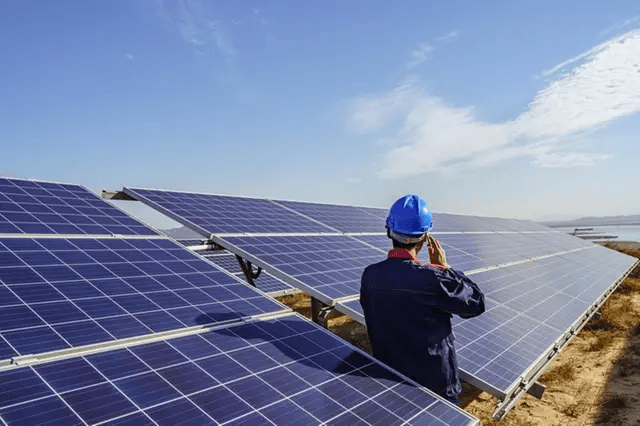In Short : The Energy Information Administration (EIA) suggests that solar power may contribute to over half of the new electricity generated in the United States this year. This forecast indicates a substantial growth in the adoption of solar energy, showcasing its increasing prominence as a key player in the U.S. energy landscape. This shift underscores the ongoing transition towards cleaner and more sustainable sources of electricity generation.
In Detail : Solar will lead the expansion of new electric generation this year, the EIA wrote on Thursday.
Utility-scale solar projects will account for 58% of new capacity, a record amount of additions.
The solar industry will lead an expansion in electricity generation this year, the US Energy Information Administration wrote in a Thursday note.
Utility-scale solar projects will account for 58% of added US capacity in 2024, boosting the amount of electric output across the country.
An expected 36.4 gigawatts of new utility-scale solar are to be added to the grid this year — a record addition that will nearly double last year’s 18.4 GW of installations. Over half of new solar capacity will be added in Texas, California, and Florida.
Nevada’s Gemini solar project will also provide a significant boost in 2024, as it’s anticipated to be the largest solar facility in the US.
The agency cited loosening trade and supply chain restrictions as a motivating factor behind solar’s rise.
Efforts to expand the US solar industry have long been underway, supported by stimulus government initiatives such as the Inflation Reduction Act. To allow manufacturers to expand their domestic base, tariffs and barriers have previously been applied to Chinese exports in order to insulate American markets.
Though not at levels seen internationally, solar prices have depreciated in the US thanks to cheap imports from Asian manufacturers, with shipments doubling through August, Reuters reported last year. It’s a trend that has complicated the industry’s domestic buildout, previously prompting concern that new factories may not be economical.
Electric-generation capacity will also get a helping hand from new battery storage additions in 2024, doubling the existing 15.5 GW currently online.
Meanwhile, developers and power plant owners are looking to add 62.8 gigawatts of utility-scale capacity, a 55% increase from 2023. It’s the most since 2003, and proof of rising industry activity, the agency wrote.
Unlike these sectors, wind additions will slow from record levels seen in 2020 and 2021.

